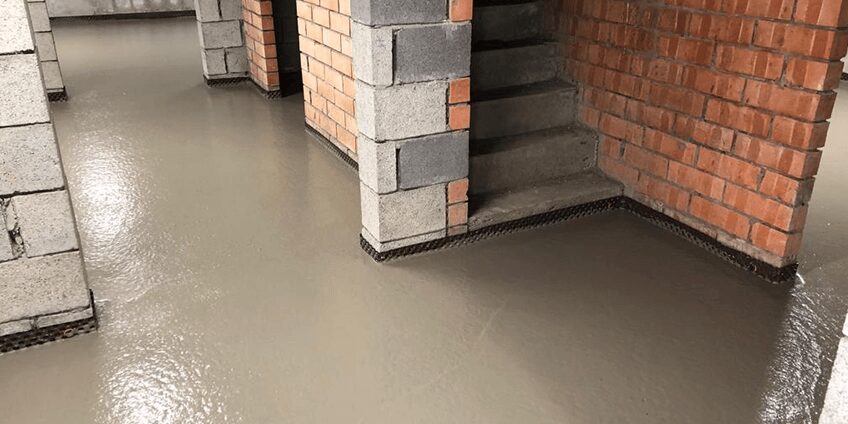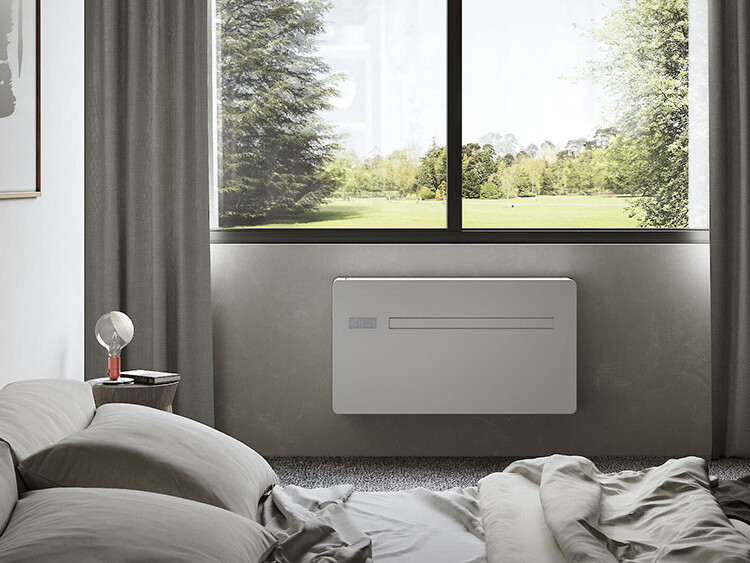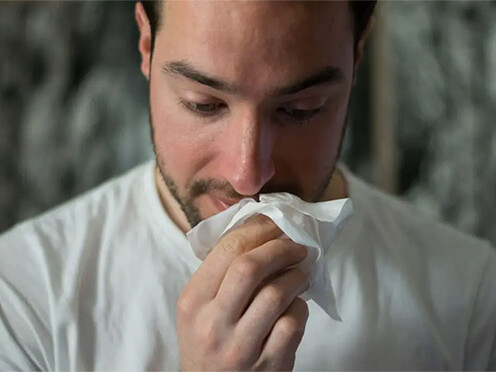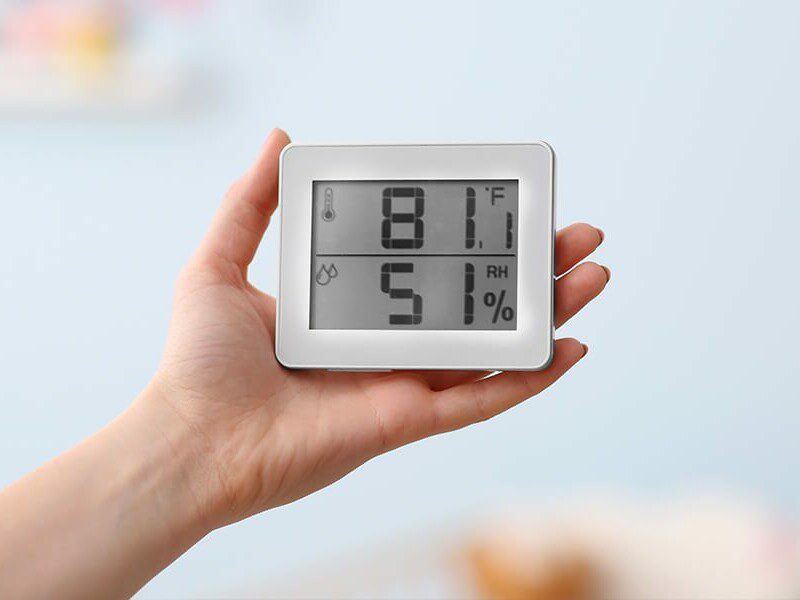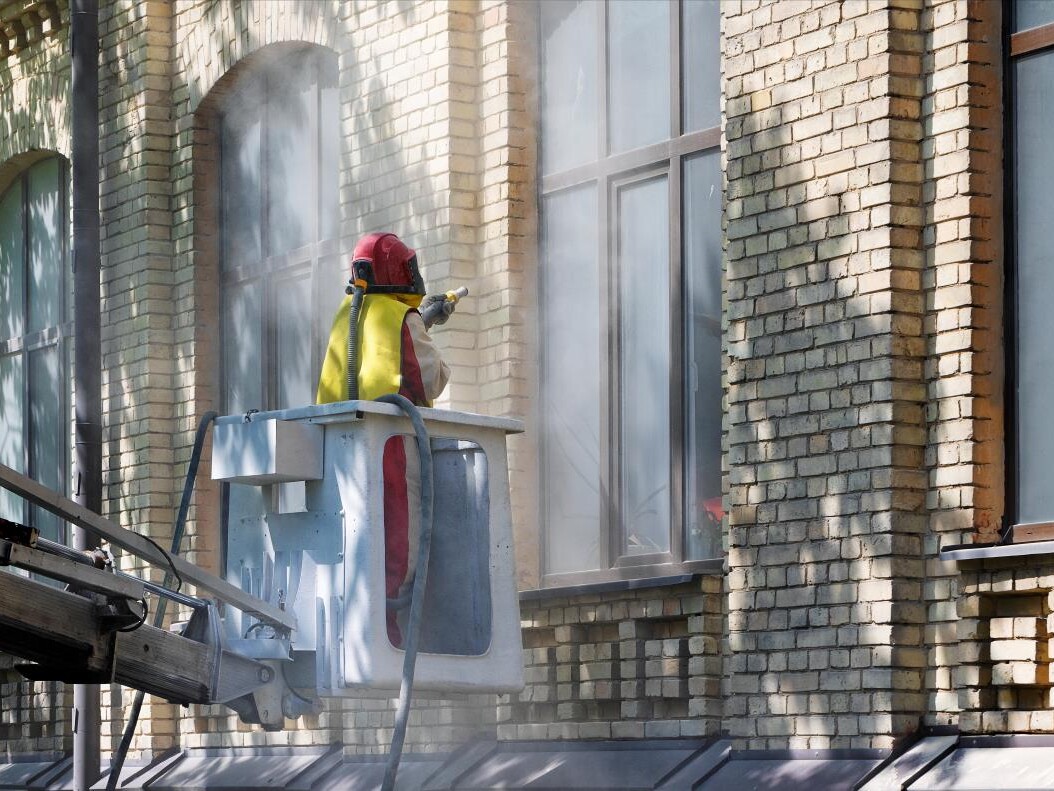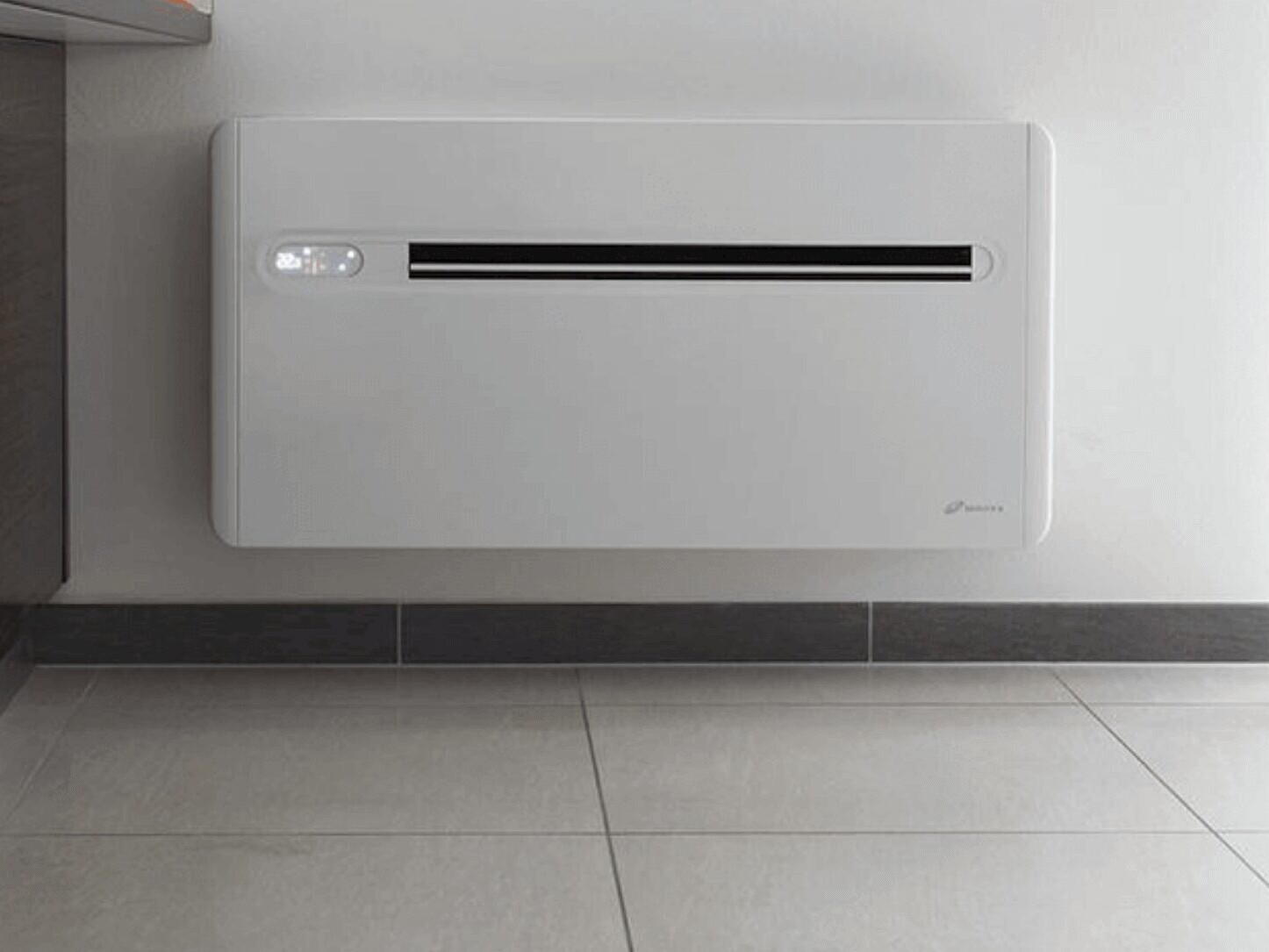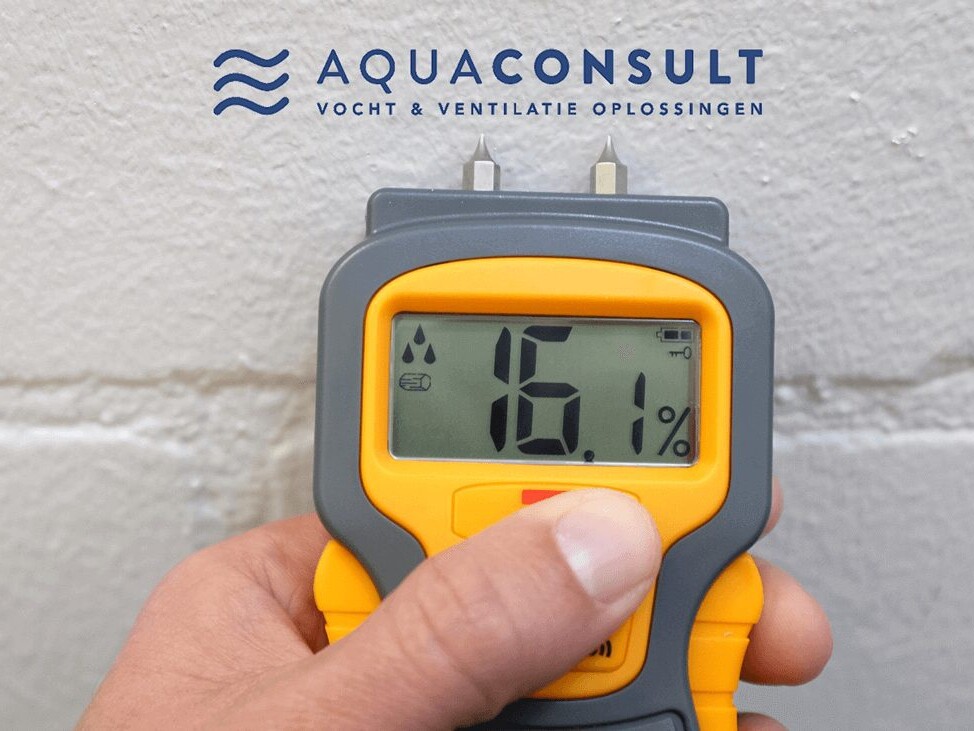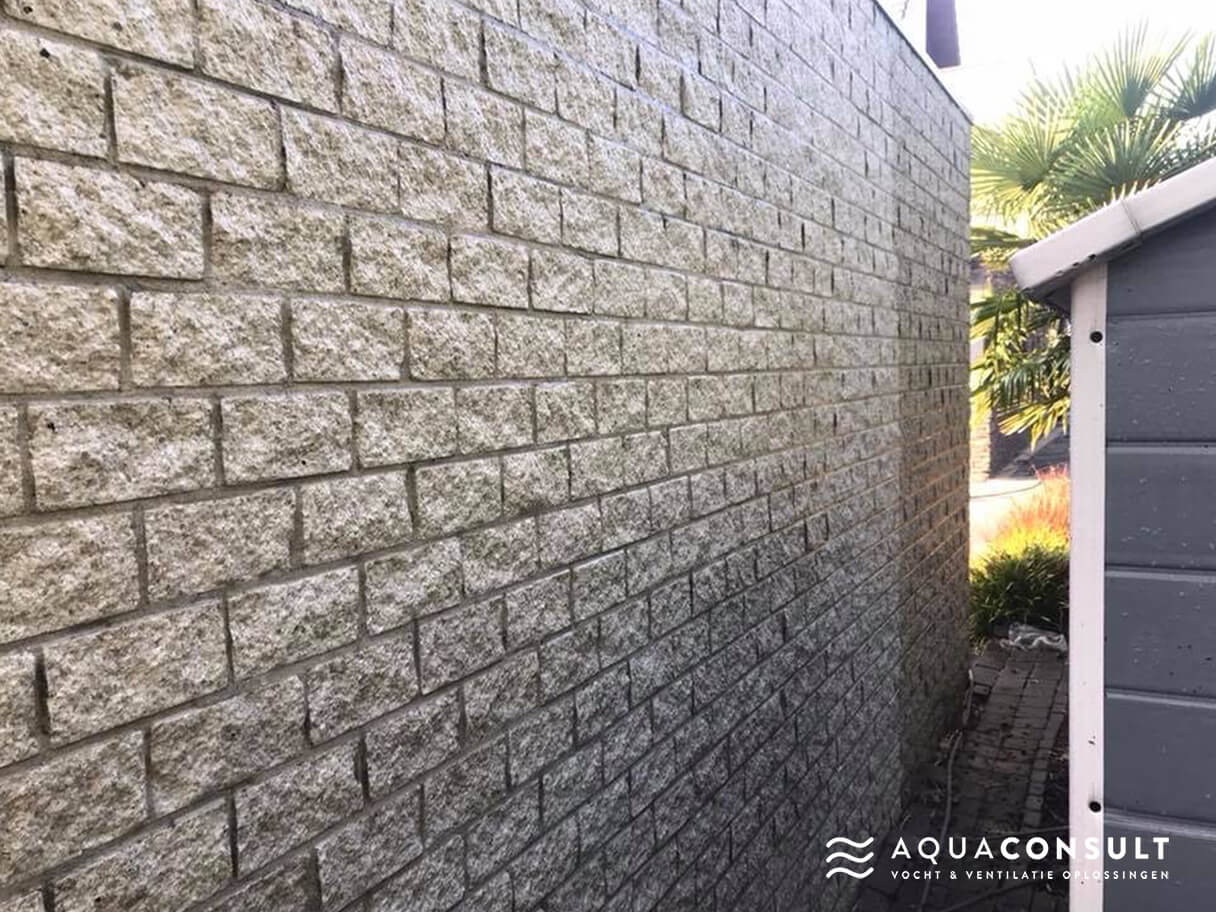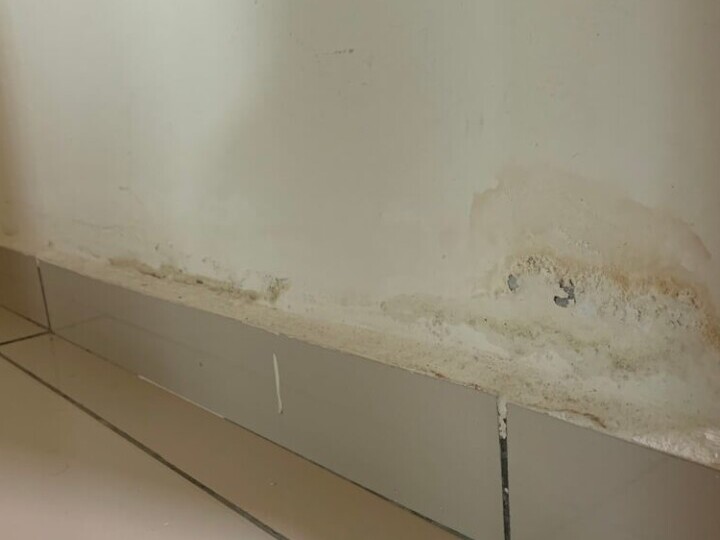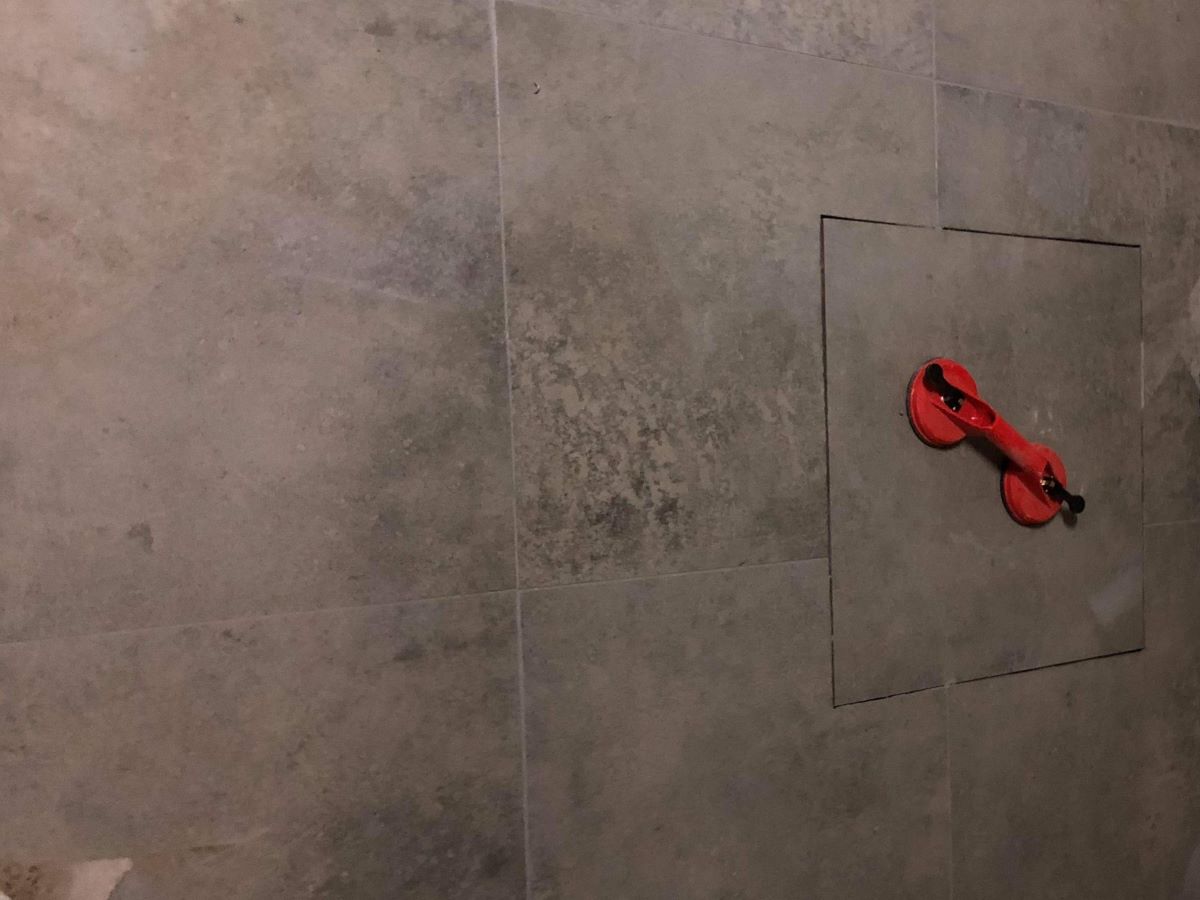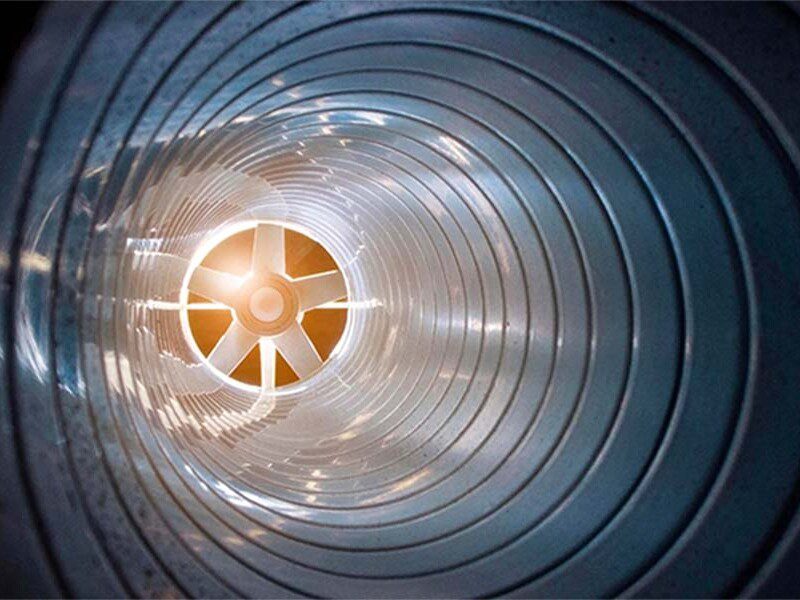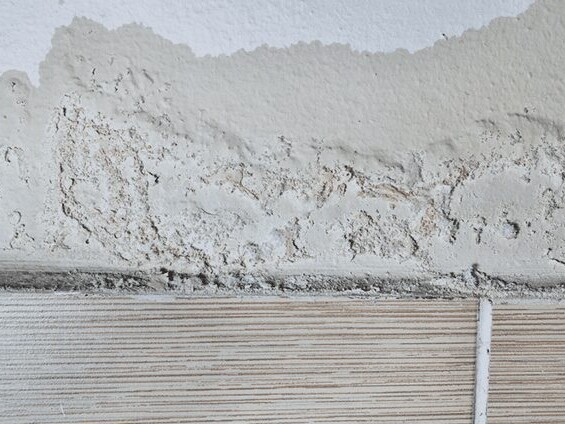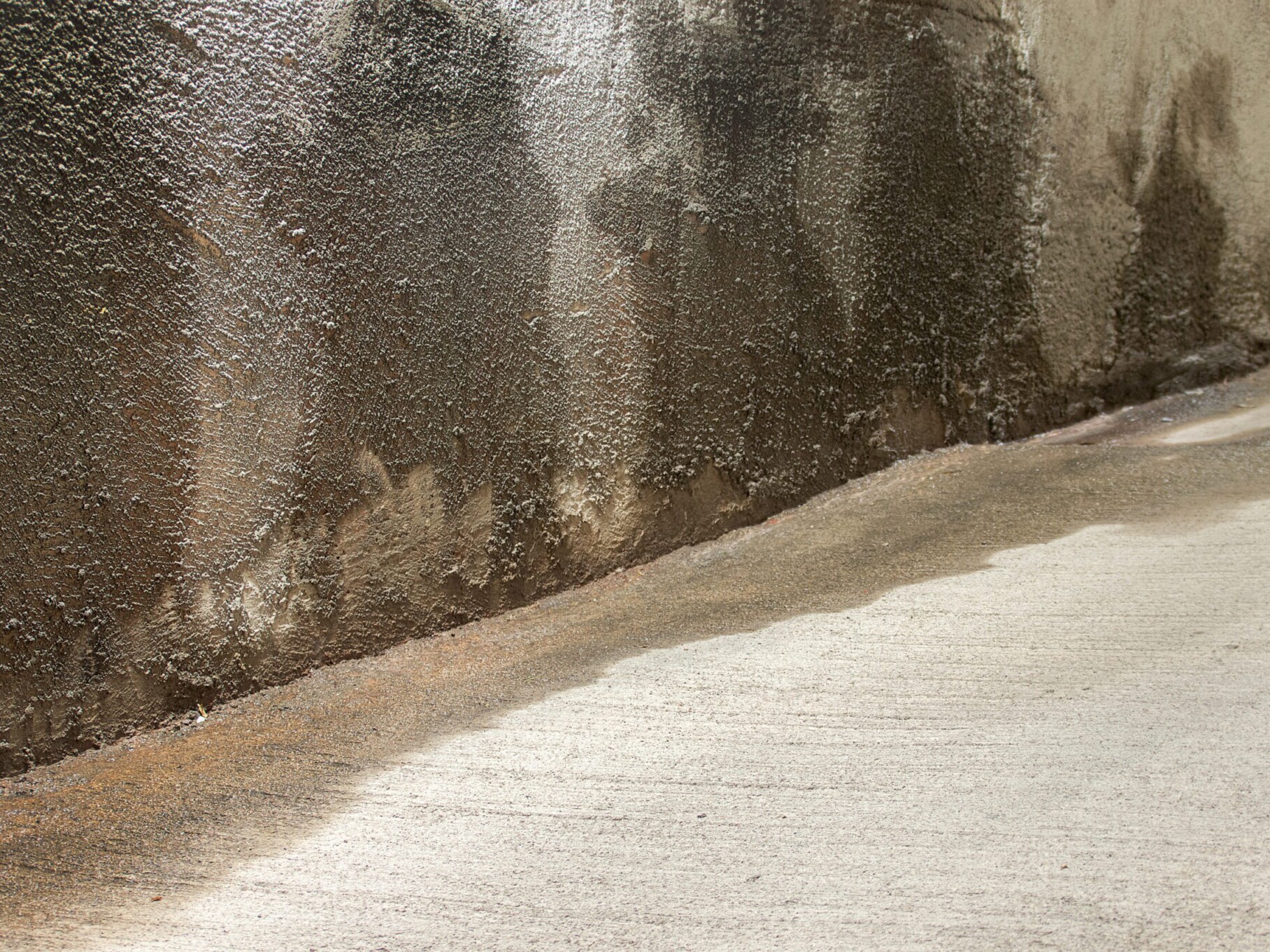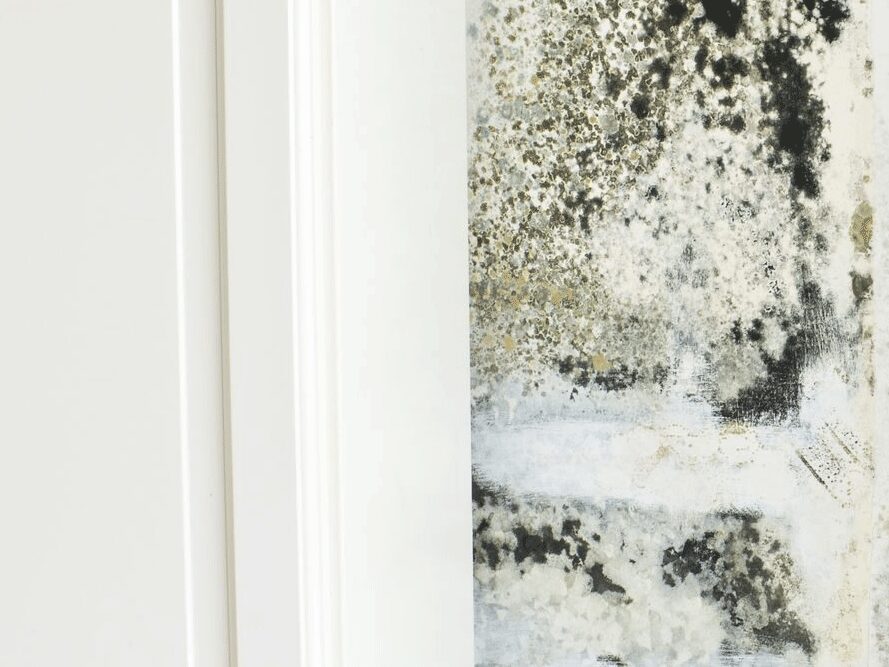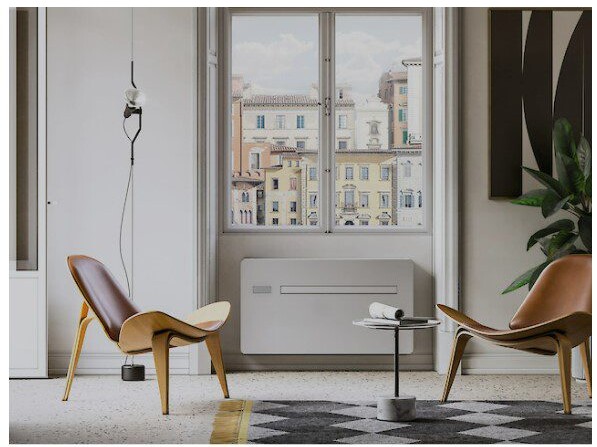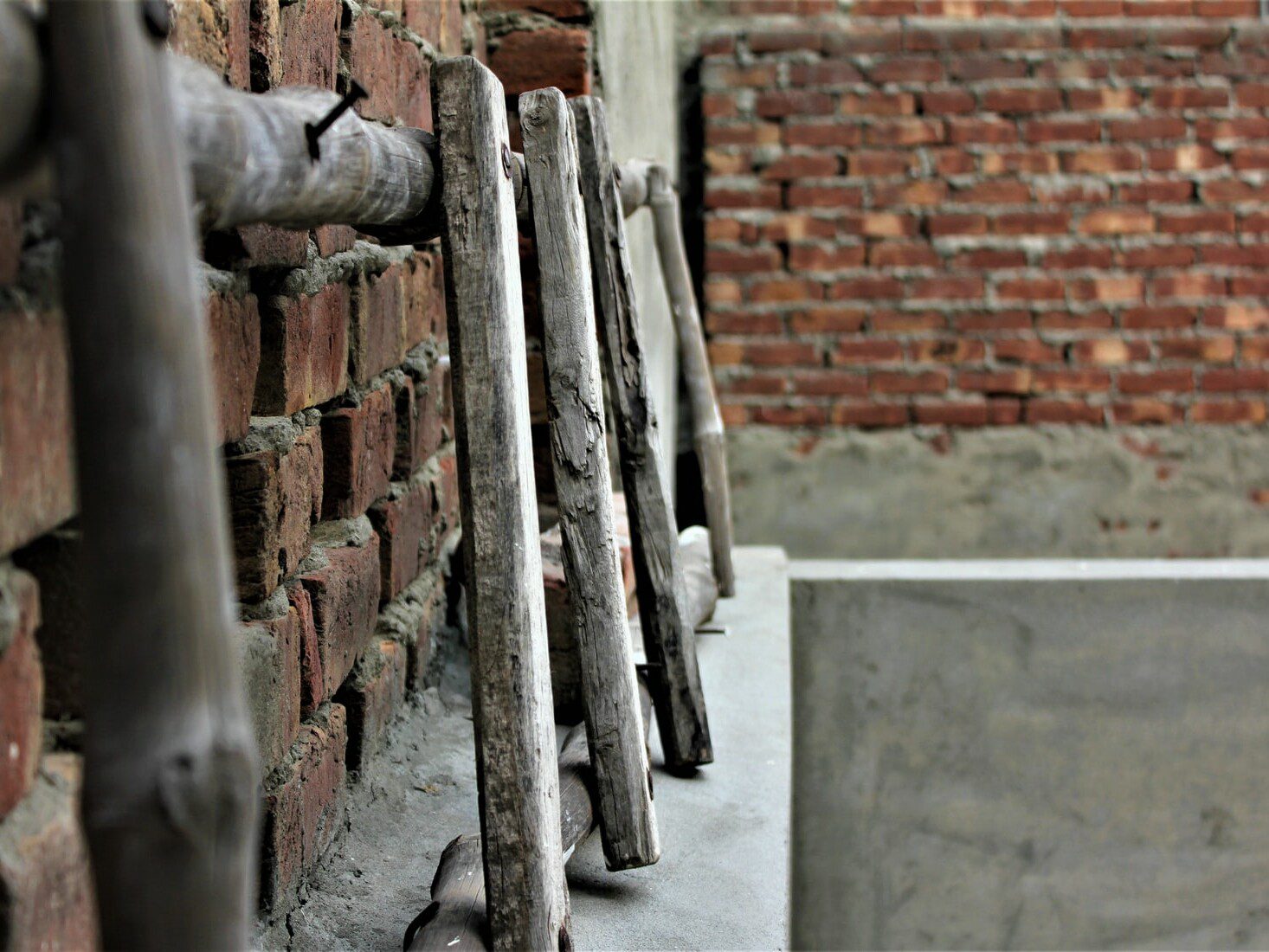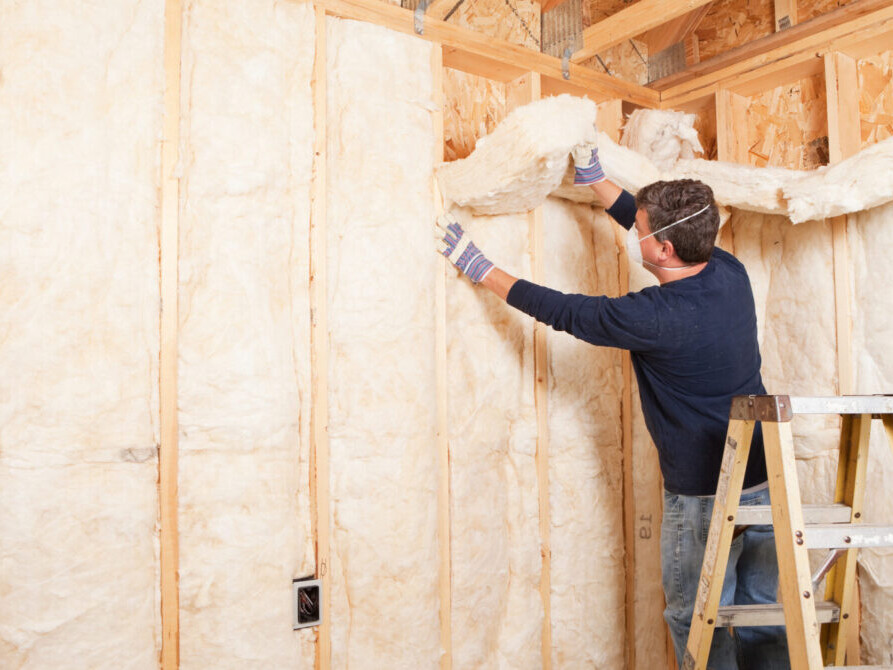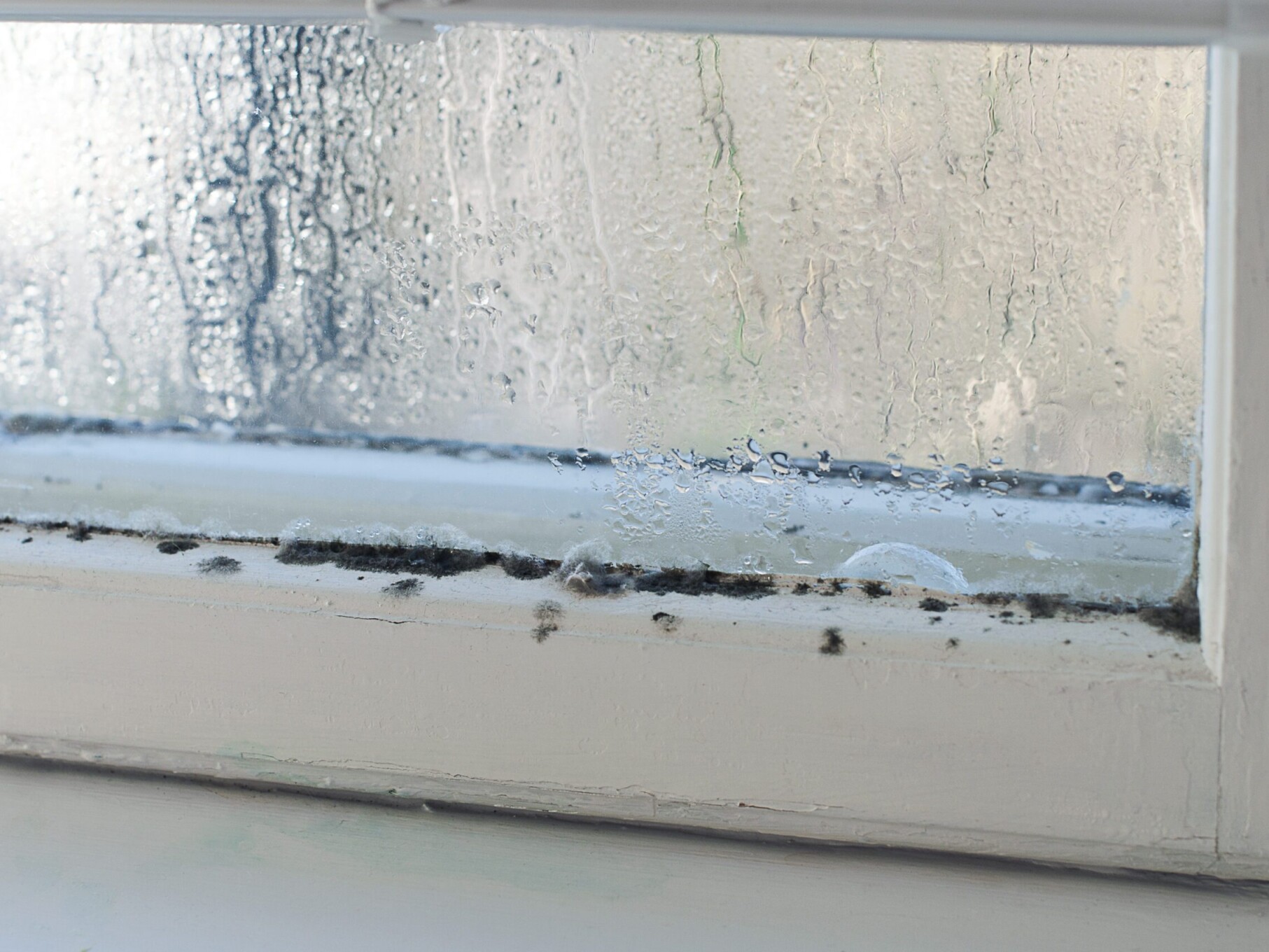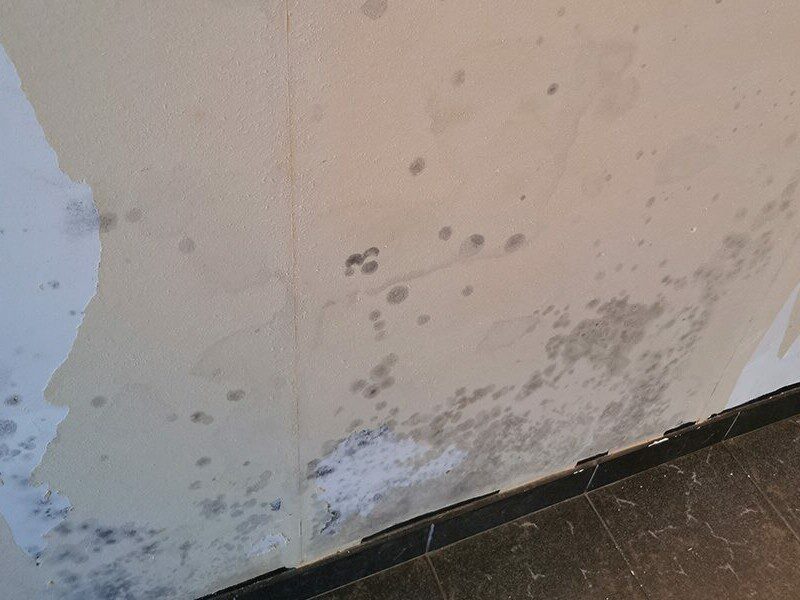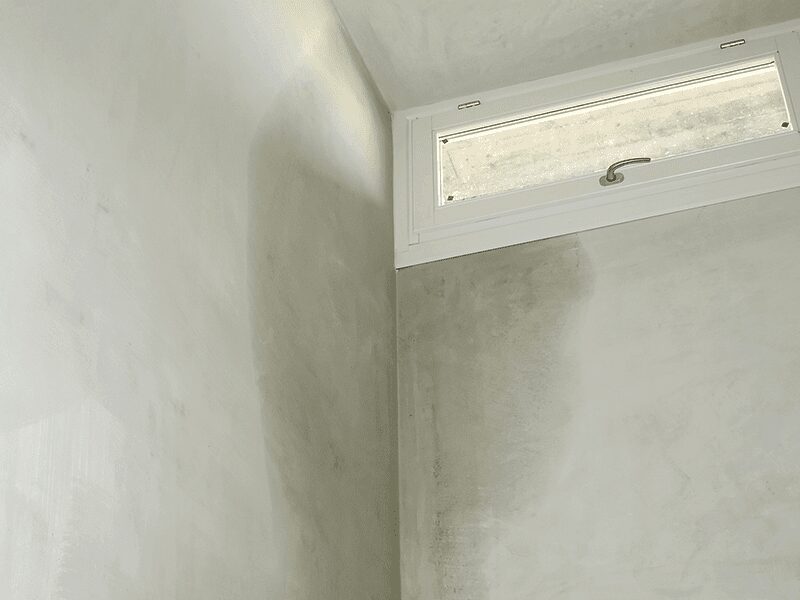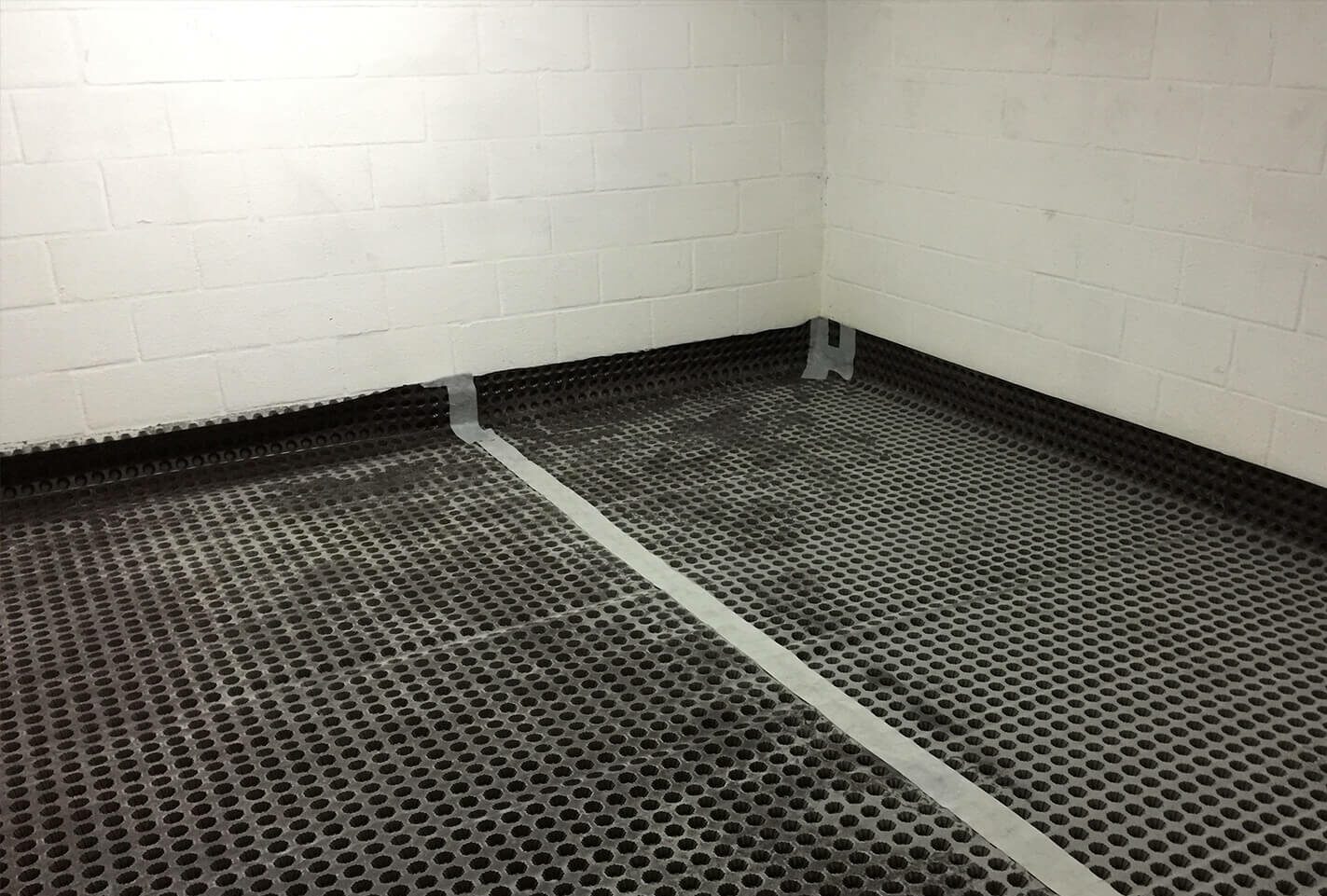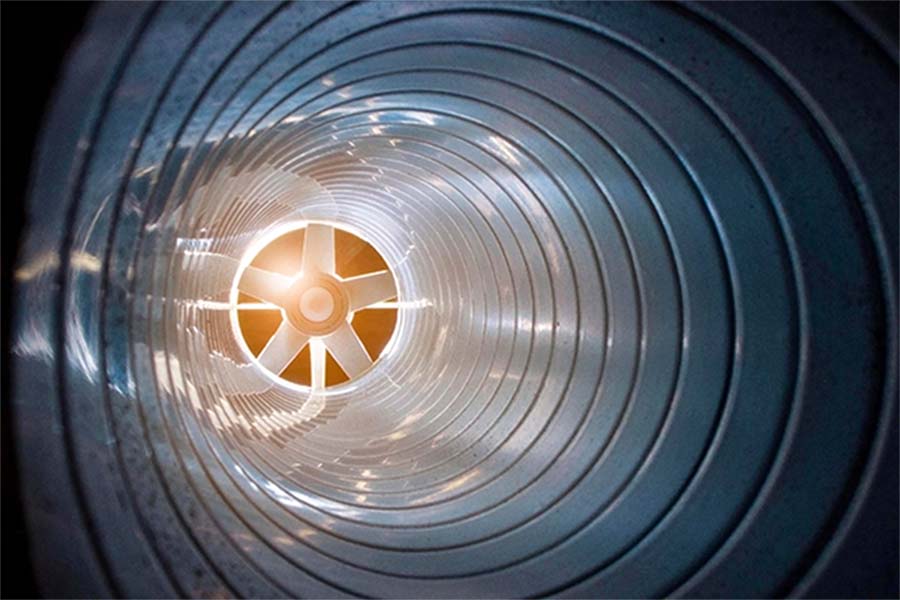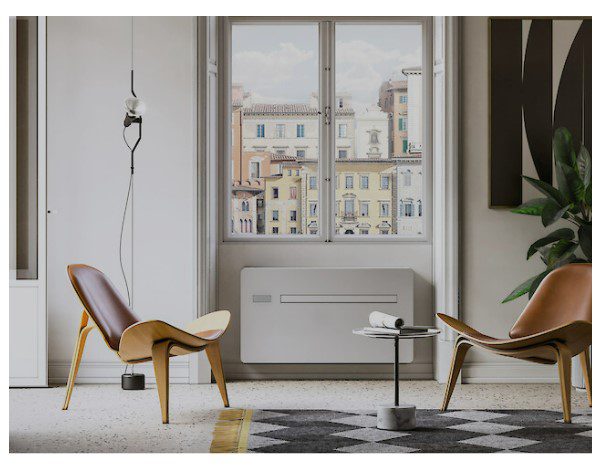The difference between basement waterproofing and basement drainage
The difference between basement waterproofing and basement drainage
Basements are made dry with basement waterproofing or basement drains. Depending on the situation, one of these two renovation techniques are appropriate.
In this article, we explain exactly what the differences are between basement drainage and basement waterproofing.
Basement sealing or basement drainage?
In Flanders, many homes suffer from a damp basement, especially in the fall, winter and spring. Many people then notice that their basement suddenly develops moisture problems. This can have several causes, ranging from rising damp to a lack of ventilation. Generally speaking, there are two different techniques for getting your basement completely dry again: by basement waterproofing on the one hand, and by basement drainage on the other. Depending on the situation, one of these two renovation techniques is appropriate.
Method 1: a basement waterproofing
Basement waterproofing, also known as tanking, involves applying a type of waterproof plaster to the walls and floor in several layers. These layers then harden and together form a moisture-resistant layer. When choosing basement waterproofing, we always consider the pressure of the groundwater. If that pressure is too high, basement waterproofing is not the best moisture control method.
Thanks to basement waterproofing, you get a waterproof tub in the basement or crawl space that keeps out all the ground moisture. For old, poorly maintained basements, flexible basement waterproofing is usually chosen. This involves attaching a waterproof foil to the walls and floor, after which the walls and floor are re-occupied.
Method 2: a basement drain
Basement drainage involves waterproofing the basement by removing incoming moisture through a drainage system. A basement drainage is usually used in basements with high groundwater pressure. Where that pressure is very high, basement waterproofing cannot provide sufficient guarantees and a drainage system must be used. The advantage of a basement drainage is that the cost is slightly lower than for a basement waterproofing.
Basement drainage involves a drainage system combined with a silent pump. The incoming groundwater finds its way to a central collection point, from where it is pumped away. All drainage pipes and even the pump are completely concealed in the basement drainage so that you hardly notice anything of this installation. The basement can therefore also be used with a drainage system for any purpose for which a basement could serve: as storage space, hobby room or even living space.
Because of the higher humidity level in a drained basement, basement drainage is usually combined with basement ventilation. Installing basement ventilation is relatively easy and pays huge dividends in terms of air quality. With a ventilated space, you also avoid future mold problems. After all, mold only thrives in spaces where the humidity is high enough.
Do I choose basement waterproofing or basement drainage?
If you suffer from a damp basement, there are many parameters that can inform a choice of basement waterproofing or basement drainage. This is not a simple analysis and varies depending on the size of the basement, the exact pressure of the groundwater, the current moisture content of the walls and the construction of the home.
There is no question that if you have a damp basement, each of the above solutions is a good choice. A damp home, even if it is in the basement, quickly loses its value and may also suffer from rising ground moisture later on.
AquaConsult offers free moisture analysis where an experienced moisture specialist performs a moisture diagnosis with specific equipment. This involves analyzing the basement from head to toe for any possible (hidden) moisture problem. If this interests you, request more information below. A moisture diagnosis is always performed by a licensed professional and is always without obligation.
Getting your damp basement treated
Are you suffering from moisture in your basement? Then contact Aquaconsult. Our specialists visit anywhere in Flanders for a free moisture expertise.
Tackle hay fever with ionization
01/08/2024
Is moisture bad for your health?
26/07/2024
26/07/2024
What is the technical ATG approval?
23/07/2024
What is floor drainage in the basement?
23/07/2024
Four ways to prevent mold in your home
16/07/2024
How can I waterproof my basement again?
16/07/2024
AquaConsult's expertise in the media
23/01/2024
Is black mold dangerous to your health?
22/09/2022
31/08/2021
Suffering from infiltrating moisture?
23/10/2014
Request more information and brochure
Answer the questions below and get more information and our brochure based on them. Would you like to have the cost calculated? Then indicate this clearly in the text field below and we will do the necessary.


What is the technical ATG approval?
What is the technical ATG approval?
Technical approval
The general technical approval (ATG certificate) provides a technical opinion, including a description and technical properties. An ATG is a favorable assessment and declaration of suitability for use of one particular construction product from one manufacturer for a well-defined application. It is intended for innovative products and building systems for which no or insufficient standards exist.
Based on documented product performance, an ATG determines whether the product is suitable for a particular application and provides instructions for installation or handling. This ensures that these products and building systems are suitable for use, can be used or installed without risk and are of good quality. All this according to the rules of the art of the Belgian market.
The different variants of technical approvals
Over time, different types of technical approvals have been developed to meet the specific requirements of industry stakeholders. Some types include:
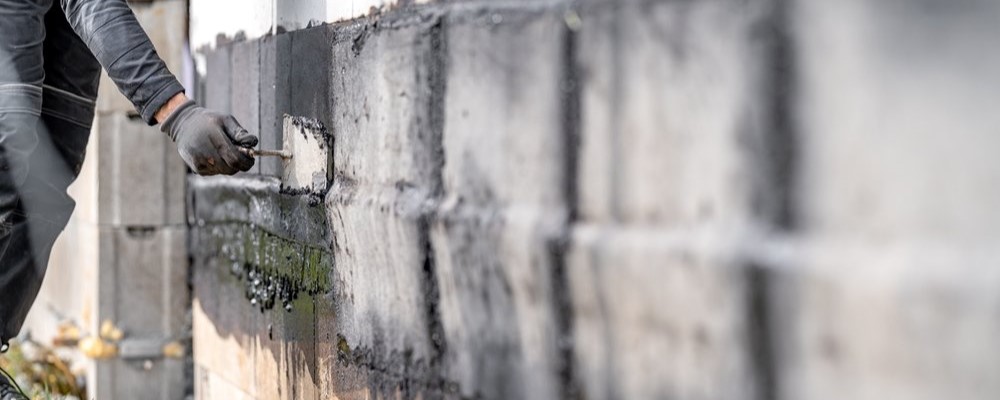
The consumer benefits of an ATG certificate
An ATG label allows the user to check the conformity of the products delivered to the construction site with the existing approval. Since ATG certificates are issued for products and systems for which no product standards exist (yet), this is the only way to see if the products are approved and therefore of good quality.
Innovations in the construction industry are important to be more efficient in the long run. ATG certification ensures that construction sites do not become laboratories to test out those innovative ideas and thus customers are protected.
Who gets the ATG certificate?
In principle, an ATG is issued on the basis of an approval guideline. Such guideline is prepared by experts from the Belgian Union for Technical Approval in Construction (BUtgb) and provides an assessment basis for construction products. When you apply for technical approval, they then use simulations to test whether or not a product's performance decreases over time, which is a quality indicator.
On top of that is usually a certification, which means that a certificate issued by the BUtgb mandated certification body conducts external monitoring of the conformity of production with the published approval at a specified frequency. This review or control is described in a convention drawn up when the ATG is granted. This convention specifies how the manufacturer organizes its own control of production and which external tests will be carried out in the process.
ATG certification allows companies like AquaConsult to apply non-traditional products and techniques without danger.
The difference with the European technical assessment
The European Technical Assessment, or ETA, is a legal instrument created by the European Construction Products Regulation. It is another way for manufacturers to show that their products are good and safe to use , and again, the application must be voluntary and at the initiative of the applicant. If a product gets this approval, the manufacturer is allowed to put a CE mark on the product. When they have that mark, they are allowed to sell this product in all countries of the European Union. So basically, the European Technical Assessment is a kind of key that gives you access to the market in Europe.
AquaConsult is a member of these building federations and quality labels
AquaConsult holds every major construction certification. As a result, we can provide anyone Guarantee the lowest price for the highest quality and guarantees. We only work with top products, which means that moisture problems final will disappear and not return after 10 years. We offer a guarantee on our works of at least 20 years.
Suffering from moisture?
Are you suffering from a moisture problem in your home? Then contact AquaConsult and our field engineers will be happy to help you.
Tackle hay fever with ionization
01/08/2024
Is moisture bad for your health?
26/07/2024
26/07/2024
What is the technical ATG approval?
23/07/2024
What is floor drainage in the basement?
23/07/2024
Four ways to prevent mold in your home
16/07/2024
How can I waterproof my basement again?
16/07/2024
AquaConsult's expertise in the media
23/01/2024
Is black mold dangerous to your health?
22/09/2022
31/08/2021
Suffering from infiltrating moisture?
23/10/2014
Request more information and brochure
Answer the questions below and get more information and our brochure based on them. Would you like to have the cost calculated? Then indicate this clearly in the text field below and we will do the necessary.


What is floor drainage in the basement?
What is floor drainage in the basement?
Moisture problems can occur in many places in the home. Often the basement however, the most humid place in a home. Do you often notice puddles of water in this room? Possibly it is soil moisture that largely finds its way in through the basement floor. In that case, floor drainage of your basement may well be the appropriate solution. Read on to find out how such a moisture solution works.
What is floor drainage in the basement?
Waterproofing a basement in general two ways:
Floor drainage falls under the category of basement drainage, and is closely related to edge drainage and wall drainage. This form of basement drainage is used when moisture enters through the basement floor because it is under high pressure from groundwater. This can occur, for example, with porous floors, such as a basement floor composed of bricks.
How does floor drainage work?
Traditionally, a moisture expert is going to install a bubble liner or membrane when doing floor drainage. This works as follows:
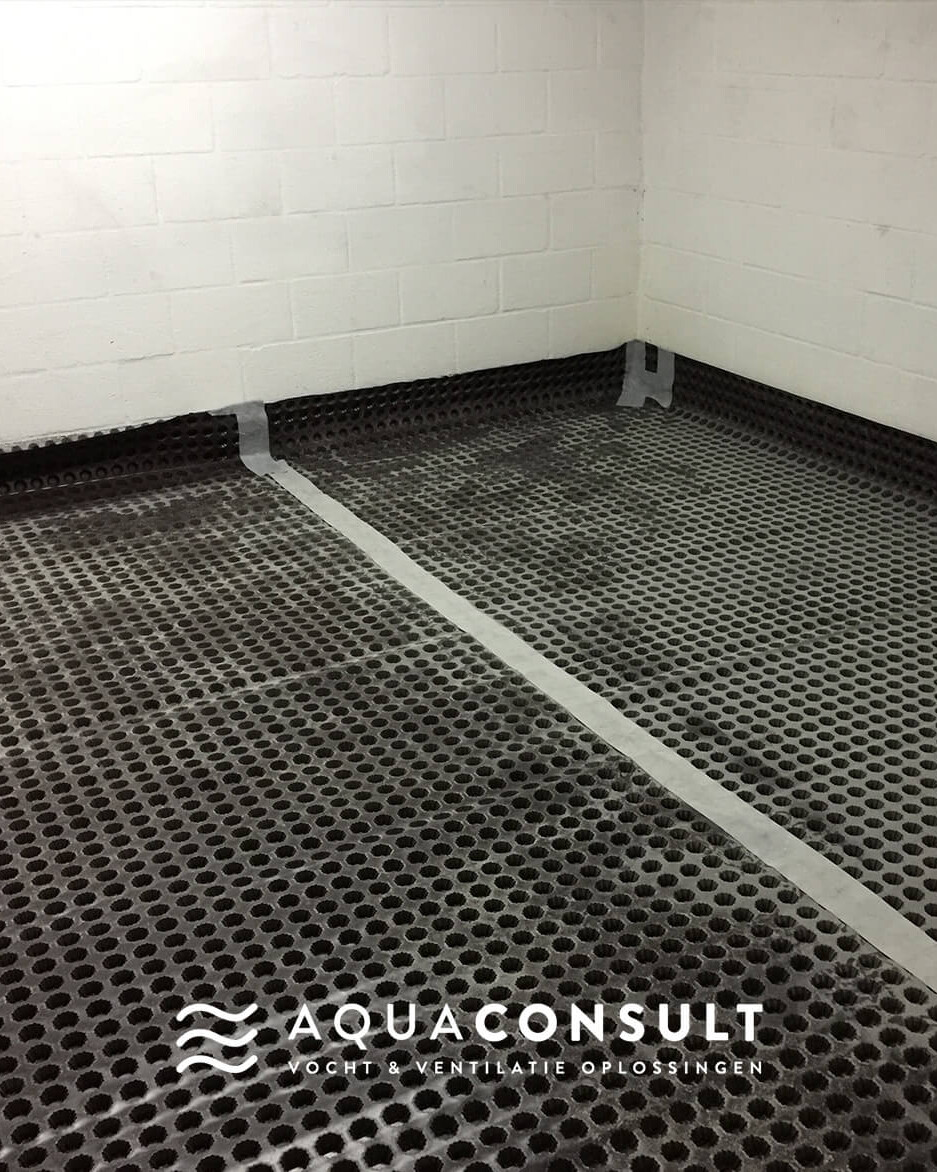
When the new floor has hardened and dried sufficiently, the moisture problem is permanently eliminated. You will lose about 8 cm of height in the process. It is advisable to get the help of a expert to be called in when you want your basement floor drained. This is because it guarantees an accurate evaluation and expert execution of the necessary work.
Unique approach: basement floor drainage with AquaConsult
At AquaConsult, we have a certified alternative method of doing floor drainage. Instead of adding a new layer of concrete above the bubble wrap, as described above, we place certified ceramic tiles. The tiles are elastically grouted using a unique process so they never come loose.
Our approach has several advantages:
Would you like more information about this solution? Feel free to contact with us.

How is floor drainage different from basement drainage?
In case of basement framing, also known as basement waterproofing, a waterproof plaster is applied in several stages or layers to both the walls and floor of the basement. These layers then dry out and collectively form a protective barrier against moisture.
When determining the best-fit solution, we always consider the groundwater pressure. If the groundwater pressure is too high, basement waterproofing may not be the most appropriate method of moisture control. It is not obvious to determine exactly how high the groundwater pressure really is. For this, get assistance from a moisture expert.
The benefits of floor drainage in the basement
The biggest advantage of having floor drainage performed (professionally) in your basement is, of course, that the moisture problem is solved efficiently. The groundwater that seeps into the basement through the floor is effectively drained thanks to the floor drainage. Do you combine the floor drainage with wall drainage? Then your entire basement is protected from water entering.
Floor drainage in your basement also has other benefits:
Is floor drainage the solution to your moisture problem?
Whether basement floor drainage is the ideal solution to moisture in your basement depends on several factors. In some cases basement framing or -ventilation a more appropriate method. Therefore, we recommend having a thorough moisture analysis done to determine the cause and extent of the moisture problem. Only then can it be determined whether or not basement floor drainage is the most appropriate solution for your situation, and a good estimate of the cost of the procedure can be made.
Getting rid of your damp basement?
Do you have a damp basement and are looking for a suitable solution? Then AquaConsult is the right place for you. Contact us now, or request a free moisture expertise.
Tackle hay fever with ionization
01/08/2024
Is moisture bad for your health?
26/07/2024
26/07/2024
What is the technical ATG approval?
23/07/2024
What is floor drainage in the basement?
23/07/2024
Four ways to prevent mold in your home
16/07/2024
How can I waterproof my basement again?
16/07/2024
AquaConsult's expertise in the media
23/01/2024
Is black mold dangerous to your health?
22/09/2022
31/08/2021
Suffering from infiltrating moisture?
23/10/2014
Request more information and brochure
Answer the questions below and get more information and our brochure based on them. Would you like to have the cost calculated? Then indicate this clearly in the text field below and we will do the necessary.


The importance of a damp-proof course in the wall in case of rising damp
The importance of a damp-proof course in the wall in case of rising damp
Do you also suffer from rising damp in the walls? Then there's a good chance you have problems with the water barrier. Find out how best to deal with this.
What is a damp-proof course in your wall?
A damp-proof course is a layer of moisture-resistant material, usually integrated into the construction of the wall. It is designed to prevent the passage of water through the wall. Usually it is placed on the first row of bricks, flush with the floor pass, to ensure that moisture cannot enter the house through, for example, the basement walls. In this way, therefore, it is a kind of weapon against moisture problems, preventing damage to the structure or interior of a building.
The importance of a damp-proof course in your wall
It is important that this layer be intact along the entire length of the walls. If it is not, or the water barrier is completely missing, it loses its function. Then:
The infestation goes across the entire width of the wall and can go over a long length.

Fix problems with the damp-proof course in the wall
Do you experience rising damp due to a problem with the water barrier? If so, there are several methods available to address these water barrier problems, depending on the situation. We list them briefly below.
Note: if you notice moisture in the walls notices, it does not automatically mean it is rising damp. It is always advisable to seek the help of an expert. An expert can determine the exact cause of the moisture problem and assess whether it is actually rising damp. Based on this analysis, he or she can then make specific recommendations for the proper control method. You can get a free moisture analysis. applications.
No water barrier is present
When you are dealing with rising damp, the first question you should ask yourself is whether there is a water barrier in your walls. Homes built before the 1980s, for example, often do not have a built-in water barrier. If your home's walls lack a water barrier, it is best to have one installed. There are two ways to do this.
The existing water barrier is not doing its job
If a water barrier is already in place, the reasons why it is not functioning properly should be investigated.
Put an end to your moisture problems
Do you have a moisture problem, and suspect it could be rising damp? Our field engineers are true experts when it comes to rising damp. Contact AquaConsult now for a no-obligation free expertise.
Tackle hay fever with ionization
01/08/2024
Is moisture bad for your health?
26/07/2024
26/07/2024
What is the technical ATG approval?
23/07/2024
What is floor drainage in the basement?
23/07/2024
Four ways to prevent mold in your home
16/07/2024
How can I waterproof my basement again?
16/07/2024
AquaConsult's expertise in the media
23/01/2024
Is black mold dangerous to your health?
22/09/2022
31/08/2021
Suffering from infiltrating moisture?
23/10/2014
Request more information and brochure
Answer the questions below and get more information and our brochure based on them. Would you like to have the cost calculated? Then indicate this clearly in the text field below and we will do the necessary.


Unique in Flanders: have your basement poured with ceramic tiles
Unique in Flanders: have your basement poured with ceramic tiles
When soil moisture enters your basement, problems such as a damp basement floor, damp basement walls, musty odors and mold. Obviously, you want to avoid this. One possible solution to this is waterproofing the basement. Where basement waterproofing used to be only possible with concrete, AquaConsult offers a unique alternative: waterproofing your basement with ceramic tiles. Read all about it here.
What is basement cupping?
In many basements, the basement walls and floor are not sufficiently resistant to the pressure of groundwater. This causes salts to form in the walls, which then affect the plaster present. In this way, soil moisture can enter your basement through the basement walls and/or floor, which can have negative consequences. To combat this, you can have your basement drained.
In a basement waterproofing or basement sealing, the basement floor and walls are covered with a thick layer of waterproof cement. This creates a new protective layer, as it were, which ensures that groundwater can no longer pass through. Specifically, such a basement waterproofing works as follows:
After performing (or having performed) these steps, water will no longer enter your basement.
Note: Every situation is unique. In some cases, a basement pit is not sufficient, and a basement drainage or -ventilation needed. Get assistance from AquaConsult and request a free expertise to ensure you make the best choice for your basement.
Pair the practical with the pleasant: have your basement poured with a tile finish
Traditionally, basement waterproofing is done exclusively with a waterproof layer of concrete. But, you can also go a step further and have your basement waterproofed with certified ceramic tiles. AquaConsult is unique in this, and there are several advantages to doing so:
1. Less place loss
A basement casing is always accompanied by some loss of space. Typically, such loss with a traditional casing is about 8 cm, but with a tile finish this loss is reduced to about 5 cm.
2. Complete and beautiful finish
This basement sealing method automatically creates a nicer-looking basement that is also fully finished right away.
3. Cheaper
Basement waterproofing with ceramic tiles also comes with a more interesting price tag than basement waterproofing with concrete. Basement waterproofing actually involves renovating the entire basement, which of course is not cheap. However, with this unique process, the sealed basement is also immediately finished with certified ceramic tiles of 60 cm × 60 cm, which saves you in finishing costs. In addition, fewer materials are also needed to keep your basement dry, which benefits your wallet.


Say goodbye to your damp basement once and for all
Do you have a damp basement and are looking for a suitable solution? Then AquaConsult is the right place for you. Contact us now, or request a free moisture expertise.
Tackle hay fever with ionization
01/08/2024
Is moisture bad for your health?
26/07/2024
26/07/2024
What is the technical ATG approval?
23/07/2024
What is floor drainage in the basement?
23/07/2024
Four ways to prevent mold in your home
16/07/2024
How can I waterproof my basement again?
16/07/2024
AquaConsult's expertise in the media
23/01/2024
Is black mold dangerous to your health?
22/09/2022
31/08/2021
Suffering from infiltrating moisture?
23/10/2014
Request more information and brochure
Answer the questions below and get more information and our brochure based on them. Would you like to have the cost calculated? Then indicate this clearly in the text field below and we will do the necessary.


Mechanical ventilation: the solution to your moisture problem?
Mechanical ventilation: the solution to your moisture problem?
Ventilation is the process of removing polluted air and bringing in fresh, clean air. This is vital to prevent various long-term problems. An effective approach to this is the use of mechanical ventilation. But what exactly does this entail? In what ways does it help combat moisture problems? And how can mechanical ventilation contribute to the fight against corona virus? All your questions are answered in this article.
Why is proper ventilation important?
The average Fleming spends most of his or her time indoors. Despite this, we note that indoor air quality is often considerably less than outdoors. This is often true for basements, where ventilation is generally challenging. This brings with it all kinds of negative consequences:
So thoroughly ventilating your home has only advantages.
What is the difference between natural and mechanical ventilation?
As already stated, through ventilation you remove polluted air and bring in fresh, clean air. With natural ventilation, this supply and removal occurs naturally. Grids embedded in the walls allow polluted air to go out while fresh air comes in through another grid. Or you open a window. That, too, is ventilation.
Still, natural ventilation is not always a good idea. Especially in well-insulated houses, this can be difficult, because everything was done there to keep the warm air in. Also, many people leave the ventilation closed in winter to keep out the cold air. At that time there is not even ventilation anymore.
There is also a big disadvantage to natural ventilation: you can't (or at least very difficult) control the supply and return of air, in the winter cold air comes in, causing your energy bill to skyrocket.
With mechanical ventilation, these tricky points fall away and you can control the extraction and/or supply of air in a partially or fully mechanical way. Three different combinations are possible.

The different types of mechanical ventilation
Mechanical ventilation systems are divided into types from A to D. Ventilation system type A is natural ventilation, so we won't expand on that. Ventilation system type B is mechanical ventilation, but this form is rarely used in homes. We briefly review the details of ventilation systems type C and D.
Ventilation system type C(+)
Mechanical ventilation often refers to ventilation system C. This system is partly mechanical: the supply of air is natural, but its removal is mechanical. Two types can be distinguished in this:
Ventilation system type D
Type D mechanical ventilation goes one step further. Here, both supply and exhaust are fully mechanical. There are several additional options, such as choosing a heat exchanger to save more energy. There is also the option of filtering for pollen and dust, which is especially beneficial for people with allergies.
With this type of mechanical ventilation, also known as balanced ventilation, the supply and return of air remains constantly balanced.
Which mechanical ventilation system is the best choice?
Now that you know the difference between mechanical ventilation type C and type D, let's briefly list the pros and cons.
Both mechanical ventilation systems help against moisture problems anyway. If you ventilate properly, condensation moisture no longer has a chance. It only benefits your health.
We take on viruses
You can also have something else built into the balance ventilation: the GPS-FC24-AC, a ionization system. Such an ionization system sends electrons into the air that cling to particulate matter, pollen, as well as pathogens such as those from coronavirus. After a 60-minute exposure, the number of particles of covid-19 had decreased by as much as 90%.
This is one of the products officially approved by the Federal Public Health Service To be useful in the fight against coronavirus. Is the product not on that list? Then it is forbidden to be sold in Belgium.
Need mechanical ventilation?
Do you suffer from damp walls? Maybe mechanical ventilation could be the solution to your problem. Request a free moisture assessment now and we will help you find the best solution.
Tackle hay fever with ionization
01/08/2024
Is moisture bad for your health?
26/07/2024
26/07/2024
What is the technical ATG approval?
23/07/2024
What is floor drainage in the basement?
23/07/2024
Four ways to prevent mold in your home
16/07/2024
How can I waterproof my basement again?
16/07/2024
AquaConsult's expertise in the media
23/01/2024
Is black mold dangerous to your health?
22/09/2022
31/08/2021
Suffering from infiltrating moisture?
23/10/2014
Request more information and brochure
Answer the questions below and get more information and our brochure based on them. Would you like to have the cost calculated? Then indicate this clearly in the text field below and we will do the necessary.


Treating rising damp yourself: here's how to do it
Treating rising damp yourself: here's how to do it
Do you suffer from damp walls? You may be dealing with rising damp. It is important to address this problem to prevent further damage. Fortunately, it is often possible to treat rising damp yourself. In this article, we share all the essential information about this.
Rising damp, a moisture problem you'd rather not have
Rising damp is caused by groundwater absorbed by the foundation and walls, this because there are problems with the water barrier in the wall. This leads to moisture spots that are mainly visible close to the ground, but the moisture can also spread further into the wall. Both interior and exterior walls can suffer significant damage as a result.
This moisture problem can occur in both old and new houses, and it brings about all kinds of negative consequences. Some examples are:
So it is very important to treat rising damp at its base. It is often possible to treat the rising damp yourself.
Treating rising damp yourself with wall injections
When you want to treat rising damp yourself, there is usually only one method that is effective: the injection of the wall. This involves drilling holes in your wall and then filling (read: injecting) them with a moisture-resistant gel. That gel then spreads deep into the pores of the wall. The chemical components of the gel react with the elements in the wall, resulting in a water-repellent layer that blocks rising moisture.
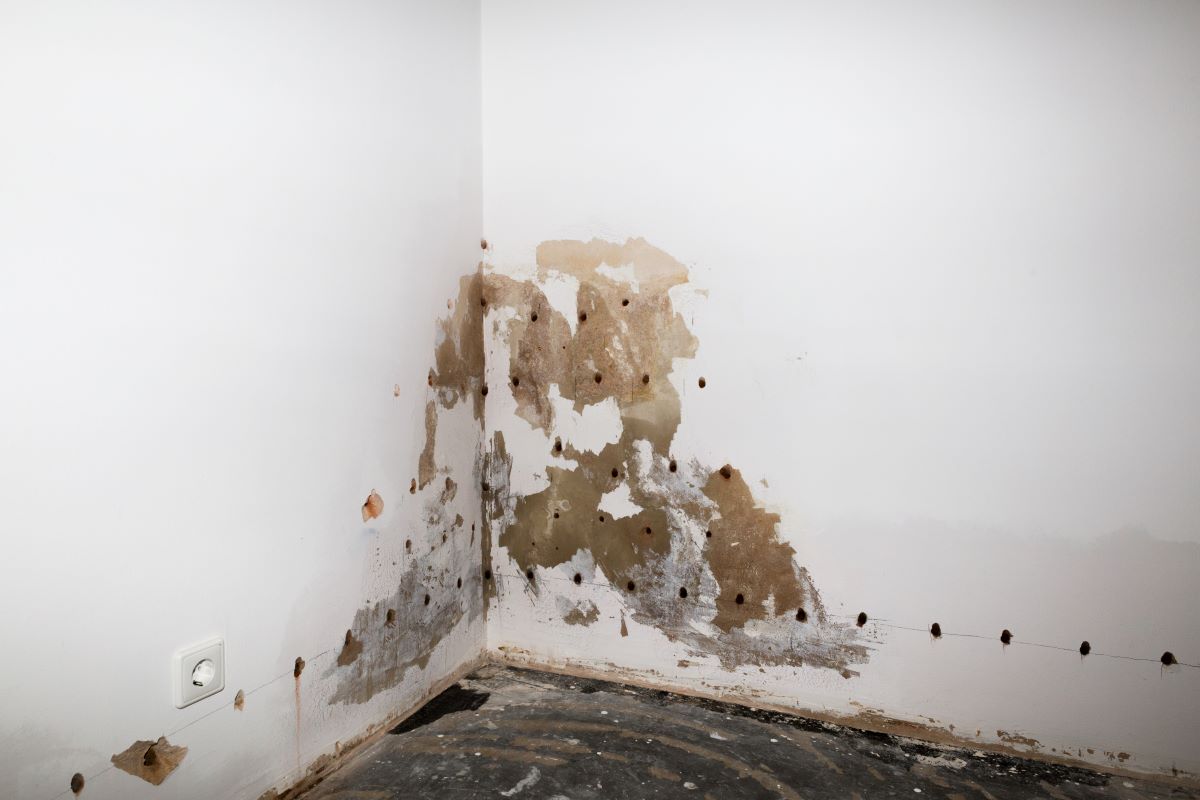
Step by step treat rising damp yourself
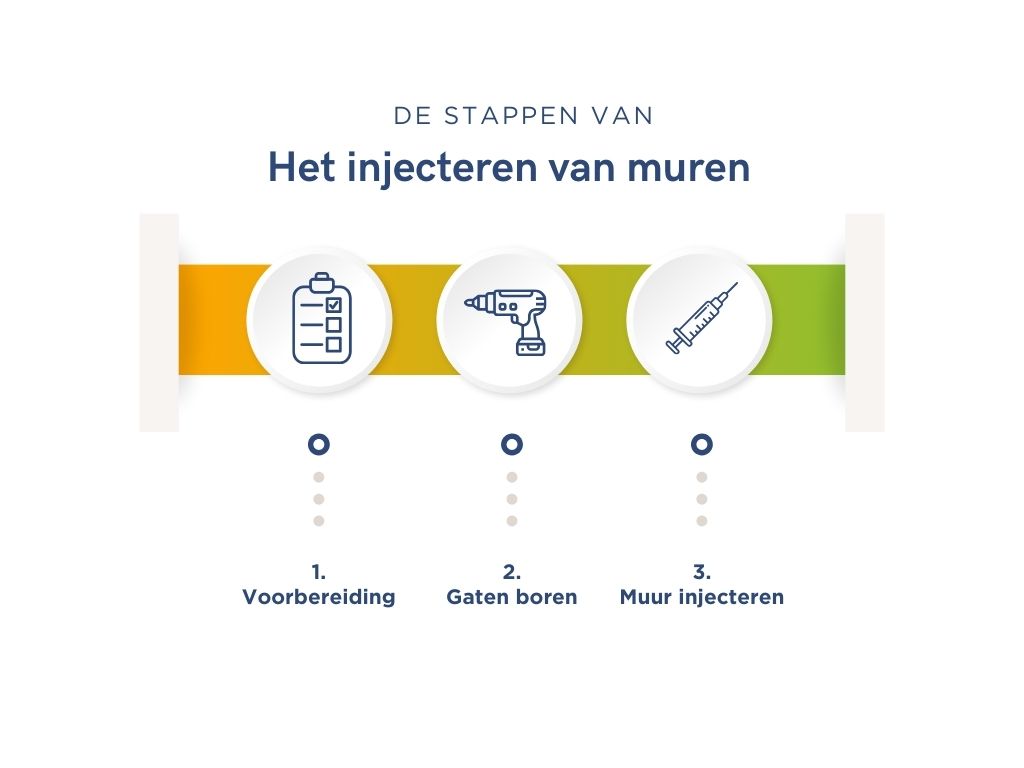
Step 1: the preparation
A prepared man is worth two. It's no different here. These are some preliminary steps it's best to take before treating rising damp yourself:

Step 2: drilling the holes
After the preparation, it's time for the real work: drilling the holes in the wall. Holes should be drilled along the full length of the floor. The holes should be spaced 10 centimeters apart each time, and they should come just above the floor pass. It is recommended that you mark off the holes first.
After determining the locations of the drill holes, measure the thickness of the wall to be treated. The drilling depth should be about 90% of the wall thickness, often this amounts to 2 inches less than the thickness of the wall. To actually drill the holes, it is recommended to use a long 12-milimeter stone drill bit. After drilling, the holes should be carefully cleaned with a vacuum cleaner to remove drill cuttings.

Step 3: injecting the wall
After drilling the holes, you can inject the walls. You fill the holes with the damp-proofing agent, and you do this using a caulking gun or spray gun. Do this as follows:
A handy tip to remember: if emulsion gel is spilled, it is advisable to clean the spill immediately with warm soapy water. By doing this quickly, you prevent the emulsion gel from drying up and becoming more difficult to remove.

The pros and cons of treating rising damp yourself
There are some advantages to injecting your wall yourself. For one, you can cut costs, and you can completely control when you inject your wall. You also have more control over the entire process and can closely monitor your wall and notice any problems in a timely manner.
However, performing wall injections yourself also does not come without dangers:
Treating rising damp yourself: the conclusion
Although fighting dampness yourself is possible, it requires patience and precision. Nevertheless, we recommend hiring professional help, as it guarantees a correct execution and final solution. Due to favorable prices and a reduced VAT rate, professional moisture control is often not much more expensive.
Addressing rising damp once and for all
Do you have a moisture problem, and suspect it could be rising damp? Our field engineers are true experts when it comes to this moisture problem. Contact AquaConsult now for a no-obligation free expertise.
Tackle hay fever with ionization
01/08/2024
Is moisture bad for your health?
26/07/2024
26/07/2024
What is the technical ATG approval?
23/07/2024
What is floor drainage in the basement?
23/07/2024
Four ways to prevent mold in your home
16/07/2024
How can I waterproof my basement again?
16/07/2024
AquaConsult's expertise in the media
23/01/2024
Is black mold dangerous to your health?
22/09/2022
31/08/2021
Suffering from infiltrating moisture?
23/10/2014
Request more information and brochure
Answer the questions below and get more information and our brochure based on them. Would you like to have the cost calculated? Then indicate this clearly in the text field below and we will do the necessary.


Am I entitled to the Flemish renovation premium for moisture control?
Am I entitled to the Flemish renovation premium for moisture control?
If you are planning to renovate your home in Flanders, the Flemish renovation premium is an interesting possibility to receive financial support. This premium can be used for various renovation works, such as moisture control and basement waterproofing. In this article, we offer detailed information about the conditions, the application process and the amount of the premium.
What is the Flemish renovation premium?
Anyone renovating or converting a house in Flanders can apply for various grants and subsidies. The umbrella Flemish renovation premium is one of them. This Flemish renovation premium can also be used for works of AquaConsult.
Who is eligible for the Flemish renovation premium?
There are two different possibilities: you can apply for a Flemish renovation premium as a resident, or as a landlord.
For applications from Jan. 1, 2022, you must not have earned more in 2020 than

How is your income calculated?
This is the income from two years before the application. Are you making your application in 2022? Then it's about 2020 income.
To calculate the income, they take into account the income of the resident as well as the income of all adult persons with whom he or she is living at the time of the application. So if you have adult children who are still living at home while already working, that income is also taken into account.
Income consists of a sum of various incomes:
What exactly can you use the Flemish renovation premium for at AquaConsult?
At AquaConsult, you can use the Flemish renovation premium for works such as waterproofing your basement, or at injecting walls to rising damp treat.
For balanced ventilations you have a chance to win another premium: the total renovation bonus. Also known as the BENO pass. Again, there are some conditions attached:
How old can invoices be to apply for a Flemish renovation premium?
As with the BENO pass, invoices may be no more than two years old on the date of application. Only invoices apply here, so not quotations, order forms, shipping notes or receipts.
Both invoices of materials purchased and work performed by a contractor are eligible. Invoices must be at least 2,500 euros cost to calculate and award a renovation bonus.
How much will the Flemish Renovation Premium be in 2024?
The renovation bonus is 30% for both landlords and owners.
Those premiums are by category. There are four categories and moisture control is under category 1: the structural elements of the home. The premium is paid within 12 months of your application.
How can I apply for the renovation grant?
Once the works are finished, you can apply for the Flemish renovation premium online via the site https://formulieren-wonen.vlaanderen.be/. You can also apply for the premium on paper. You can find the form 'Application for a housing renovation premium' at https://www.wonenvlaanderen.be/.
Need more information about the Flemish renovation premium?
Do you have more questions about the Flemish renovation premium? Or would you like our field engineers to stop by for a free moisture expertise? Contact AquaConsult now and we will be happy to help you.
Tackle hay fever with ionization
01/08/2024
Is moisture bad for your health?
26/07/2024
26/07/2024
What is the technical ATG approval?
23/07/2024
What is floor drainage in the basement?
23/07/2024
Four ways to prevent mold in your home
16/07/2024
How can I waterproof my basement again?
16/07/2024
AquaConsult's expertise in the media
23/01/2024
Is black mold dangerous to your health?
22/09/2022
31/08/2021
Suffering from infiltrating moisture?
23/10/2014
Request more information and brochure
Answer the questions below and get more information and our brochure based on them. Would you like to have the cost calculated? Then indicate this clearly in the text field below and we will do the necessary.


Four ways to prevent mold in your home
Four ways to prevent mold in your home
Mold on the wall is a big problem. It is the cause of problems to your home as well as to your health. There are ways to make your home mold free. AquaConsult is happy to help you.
How do molds arise?
Molds need moisture to grow and survive. Therefore, they arise in places in the home where there is a higher humidity prevails. For example, the basement, kitchen and bathroom are the main places in the house for the development of mold, and this is initiated primarily by human activities that lead to condensation:
Also underlying moisture problems such as rising damp or penetrating damp can eventually lead to mold. Leaks or broken downspouts can also be the culprit. That way, moisture from outside can also wend its way into your home. Do you notice mold in your home? Then be sure to contact a moisture expert To find out what is at the origin.

Why do I need to prevent mold in my home?
First of all, it is important to know why you should prevent mold. After all, mold is associated with all sorts of negative consequences, on the one hand for your home and on the other for the health of you and your family members.
Removing mold on the wall is not an easy task either. So it is better to prevent than to cure.
How do I prevent mold in my home?
There are several ways to prevent mold in the home. We list the most important ones here.
1. Adjust your habits
As mentioned earlier, mold occurs in the most humid places in the house, such as the kitchen or bathroom. By adjusting your habits a bit, you can easily prevent mold:
2. Pay attention to the humidity in your home
Does the humidity in the house above the 60%? Then the humidity in the house is too high, so moisture does not have a chance to dry out. So it is much more likely that moisture will soak into the walls, giving mold free rein.
You can easily keep an eye on your home by using a hygrometer. This measuring instrument is designed to keep track of the humidity in your home. A thermometer can also be a help, as a room that is too humid is often harder to heat. Do you notice it's harder to get your home to the desired temperature during a cold fall or winter day? If so, this could be due to increased humidity.
3. Address moisture problems in time
As briefly outlined above, mold in the home is one of the many symptoms of a moisture problem. It is important to address moisture problems as soon as possible so that mold does not have a chance to develop.
Think you are suffering from a moisture problem? Then please contact AquaConsult and we will help you as soon as possible.
4. Ventilate the room
The biggest and easiest way to prevent mold is ventilation. On one hand, this can be done simply by opening your windows for about 15 minutes every day, but on the other hand, a mechanical ventilation system a help. This system is then installed in the rooms most likely to cause moisture problems; such as the bathroom and kitchen. With balanced ventilation, you regulate the air in your home yourself.
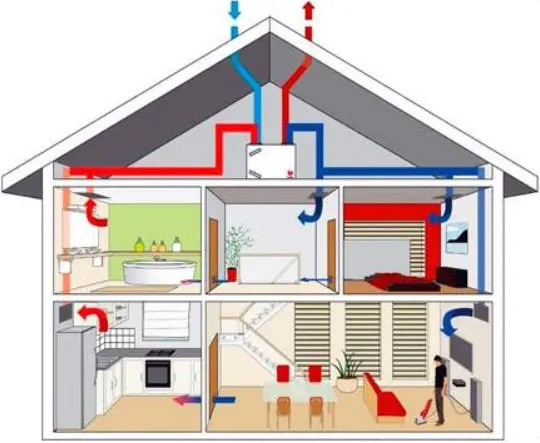
Too late... How to remove mold?
Did you find this article just too late, and you still notice mold spots on your walls or ceilings? If so, it is obviously important to remove the mold in your home.
You yourself can remove mold from the wall if they are small, scattered spots. Use baking soda and water or buy a fungicide. Always provide protection with a mouth mask and gloves when doing this. For large mold spots on the walls, it is advisable to call in a professional such as AquaConsult because they not only remove the mold but also address the underlying cause.
What if the mold is extensive?
Black mold, as mentioned earlier, can be dangerous to both your health and your home. It is often not wise to tackle this problem yourself, especially with large and stubborn areas of mold. Moreover, removing them yourself is not always a permanent solution. A moisture expert will address the cause of the problem, improving the air quality in your home and preventing black mold from threatening the health of you and your family members.
Are you suffering from black mold? Request a free moisture assessment from AquaConsult now.
Tackle hay fever with ionization
01/08/2024
Is moisture bad for your health?
26/07/2024
26/07/2024
What is the technical ATG approval?
23/07/2024
What is floor drainage in the basement?
23/07/2024
Four ways to prevent mold in your home
16/07/2024
How can I waterproof my basement again?
16/07/2024
AquaConsult's expertise in the media
23/01/2024
Is black mold dangerous to your health?
22/09/2022
31/08/2021
Suffering from infiltrating moisture?
23/10/2014
Request more information and brochure
Answer the questions below and get more information and our brochure based on them. Would you like to have the cost calculated? Then indicate this clearly in the text field below and we will do the necessary.


Getting sick from air conditioning: a myth or a fact?
Getting sick from air conditioning: a myth or a fact?
Air conditioning is often associated with getting sick; in fact, who has never caught a cold after spending an entire day in the air conditioner?
Yet you don't get sick from the air conditioner itself. So what are the causes? AquaConsult lists them for you.
Temperature differences
Many air conditioners are far too cold. The ideal temperature difference between outside and inside is a maximum of 6°C. Do the temperatures rise to 40°C as has been happening occasionally lately? Then the temperature difference is quickly too much. Anyone already suffering from respiratory infections will develop additional complaints more quickly.
Air conditioning maintenance
Did you catch a cold from a day in the air conditioner? Then that air conditioner probably hasn't been properly maintained. Air is drawn through a filter before it is cooled and returned to the room. That filter ensures that particles such as pollen or viruses do not enter the cooled air.
But isn't that filter being properly maintained? Then those polluting particles will come right back into the room, which can cause you to catch a cold or trigger your allergies.
This is therefore the biggest advantage of the monoblock air conditioners. These are maintenance-free and are available in combination with ionization. With ionization, viruses, pollen and bacteria in the air are eliminated so you no longer have to worry about them.
Humidity in the home
Not only poor maintenance can cause you to get sick; the wrong setting can also be the culprit. After all, an air conditioner regulates not only the temperature, but also the humidity.
An ideal humidity is between 45% and 60%, but air conditioners often cause that humidity to be reduced to 40% or even less. That low humidity causes minor ailments such as chapped lips or dry eyes and irritation to the mucous membranes or airways. That irritation to the mucous membranes or airways is what causes an itchy cough.
Air conditioning in the car
What we come into contact with the most are air conditioners in cars. These are even more likely to make you sick because the air conditioners in cars are often used incorrectly: for example, they are usually too cold, making the temperature difference too great with the outside air, but the biggest mistake is leaving the air conditioners on until you reach your destination. When that happens, the evaporator of the air conditioner is still damp, promoting the growth of bacteria and mold. Those unhealthy substances are blown right into your face when you restart the car.
Some tips
Avoid getting sick with these tips:
Looking for an air conditioner?
Are you looking for an air conditioner that you can adjust perfectly and requires no maintenance? Contact AquaConsult now and our experts will be happy to help you or visit the web shop of our sister company AeroConsult.
Tackle hay fever with ionization
01/08/2024
Is moisture bad for your health?
26/07/2024
26/07/2024
What is the technical ATG approval?
23/07/2024
What is floor drainage in the basement?
23/07/2024
Four ways to prevent mold in your home
16/07/2024
How can I waterproof my basement again?
16/07/2024
AquaConsult's expertise in the media
23/01/2024
Is black mold dangerous to your health?
22/09/2022
31/08/2021
Suffering from infiltrating moisture?
23/10/2014
Request more information and brochure
Answer the questions below and get more information and our brochure based on them. Would you like to have the cost calculated? Then indicate this clearly in the text field below and we will do the necessary.




